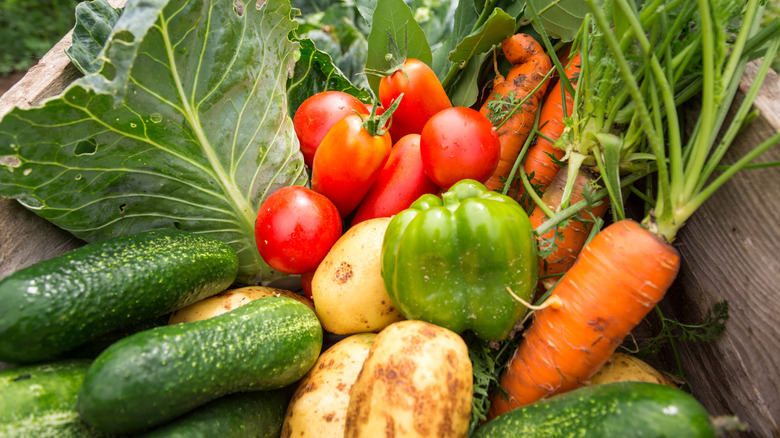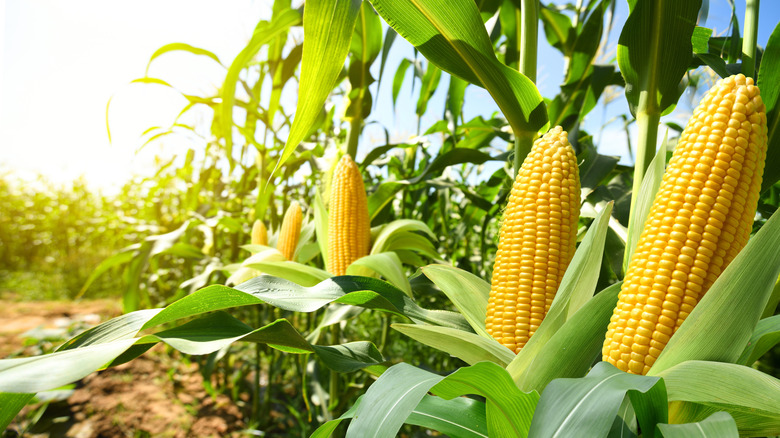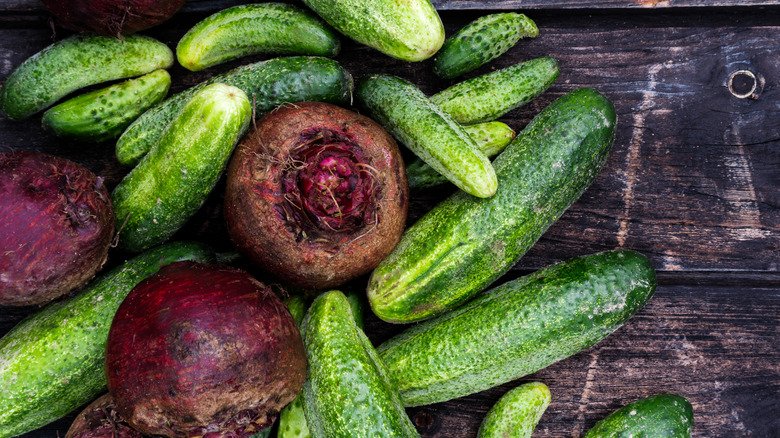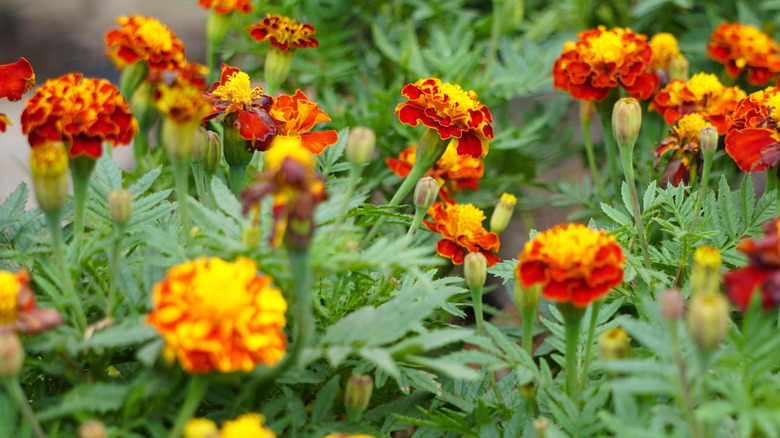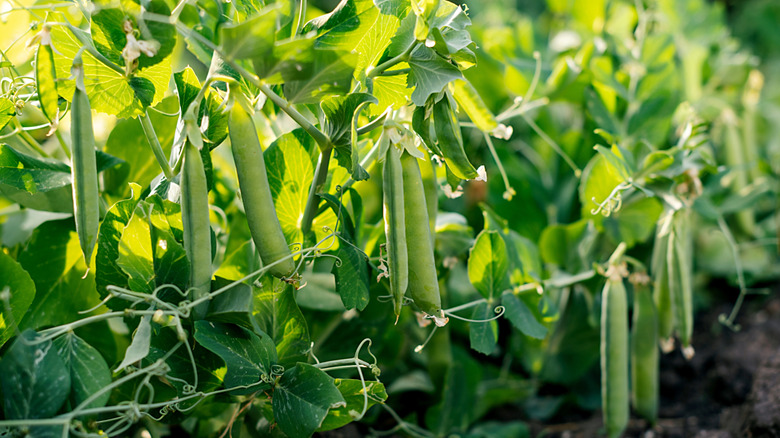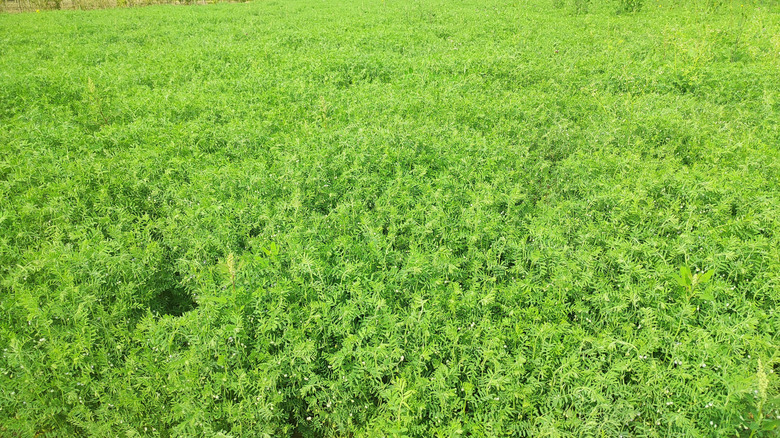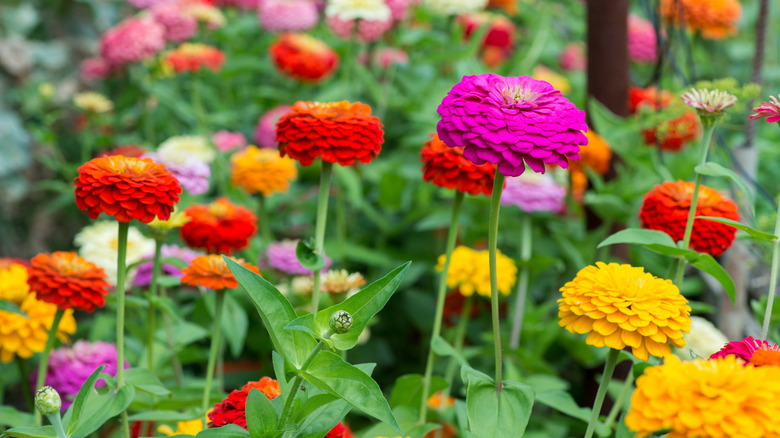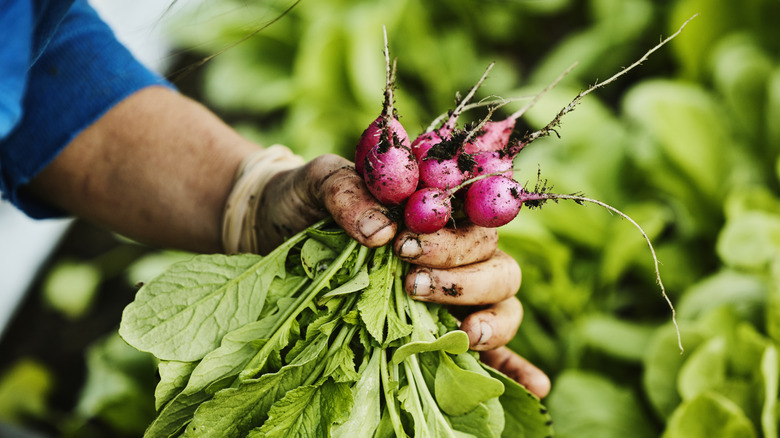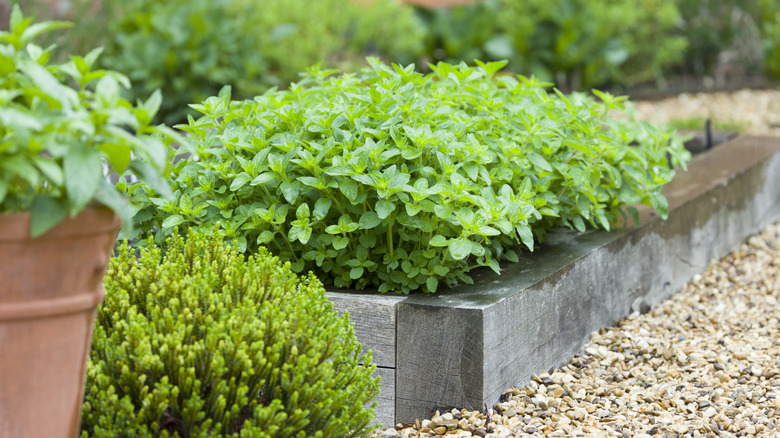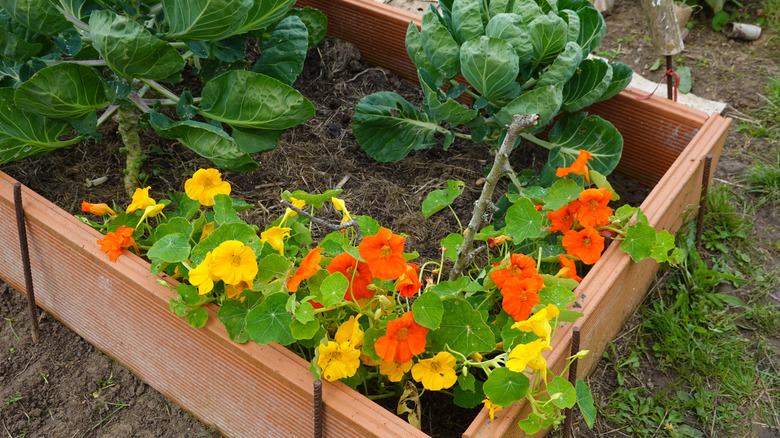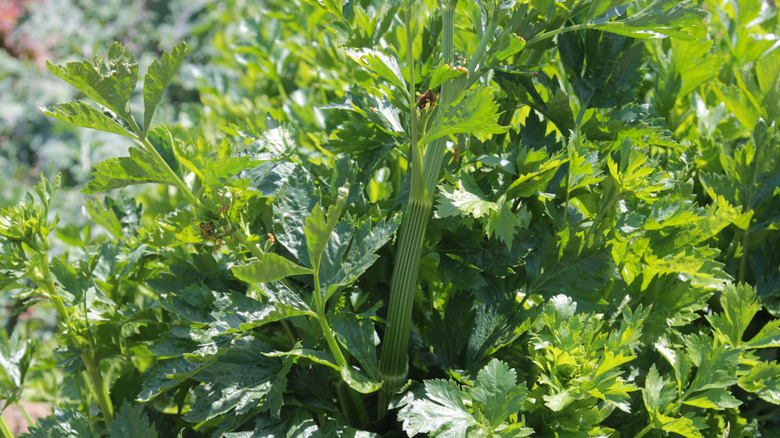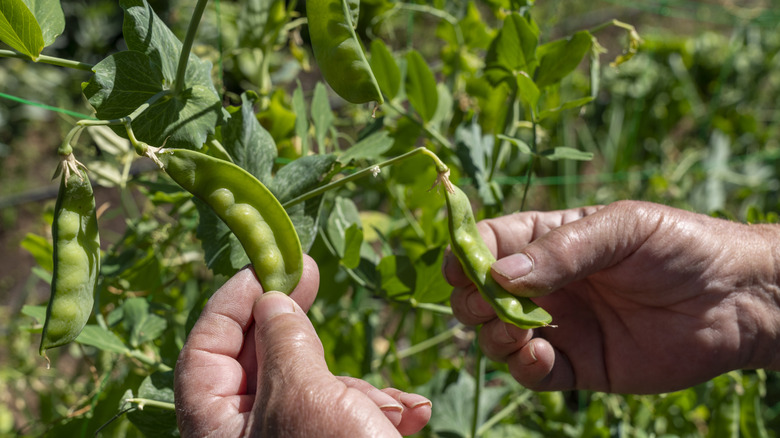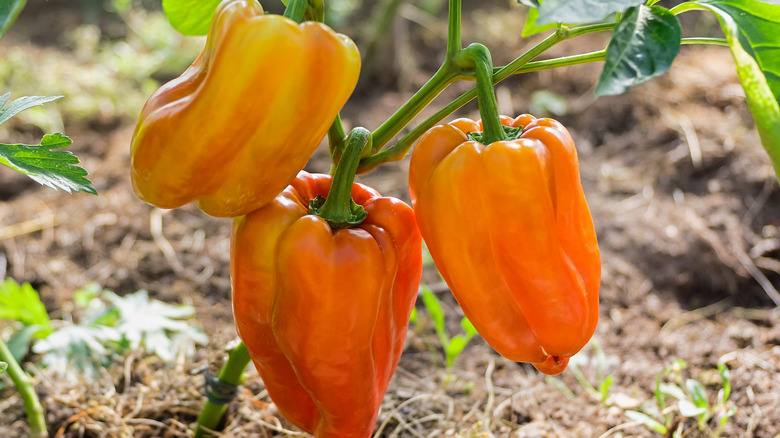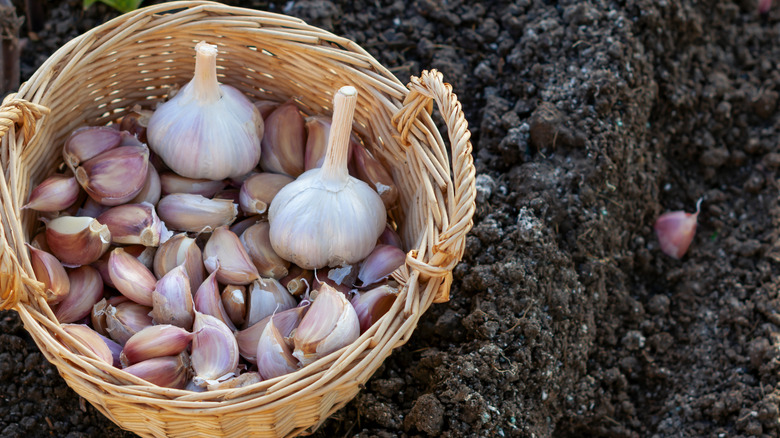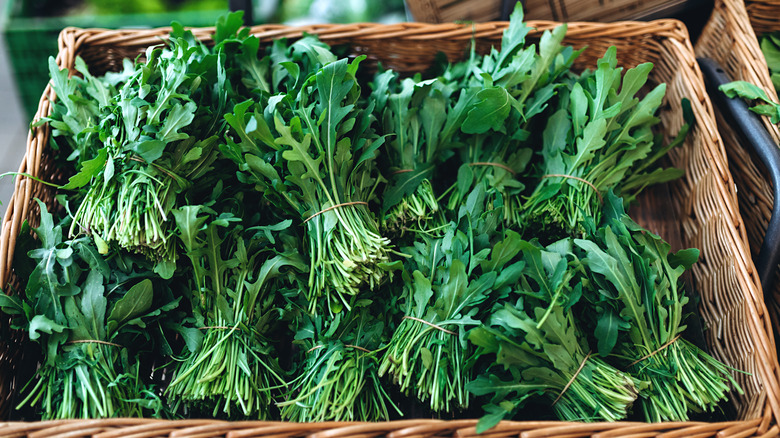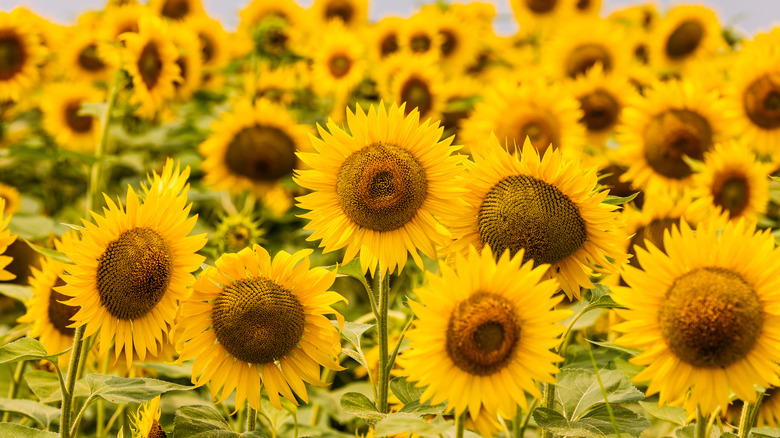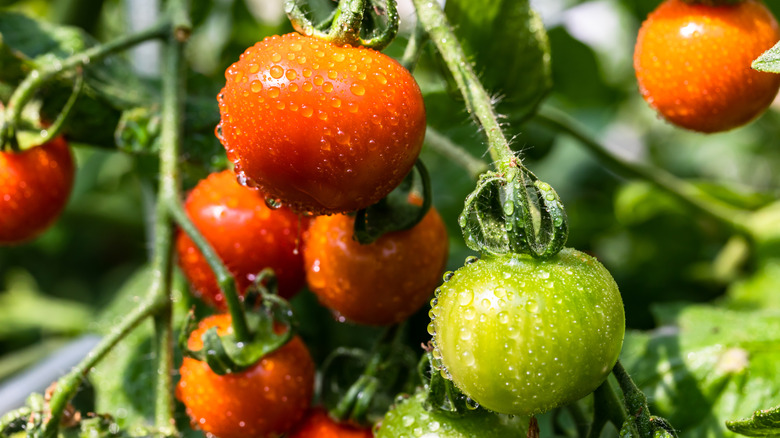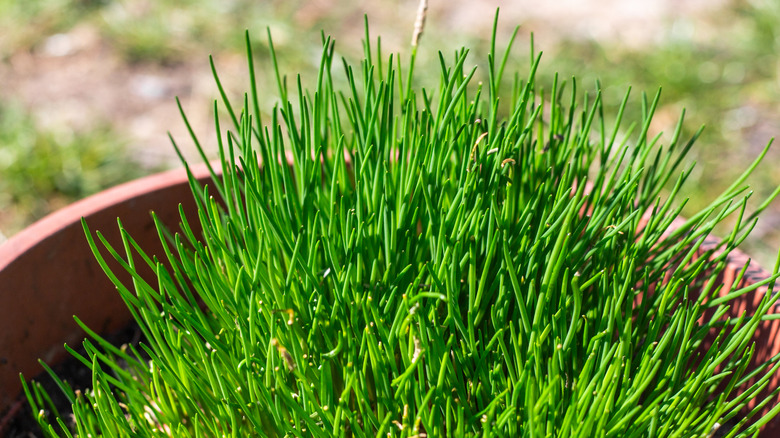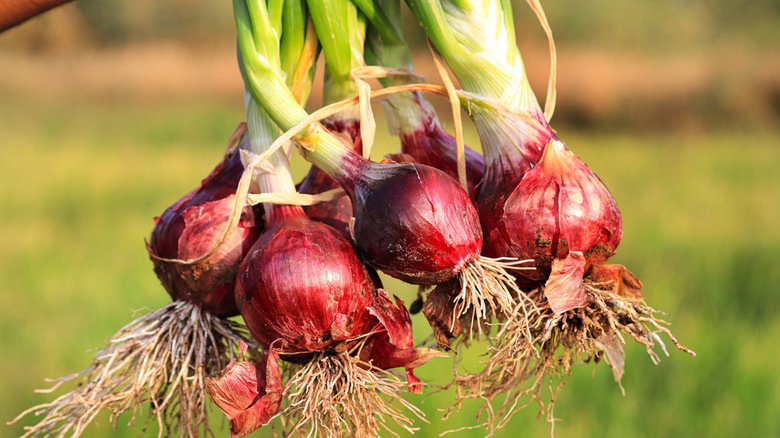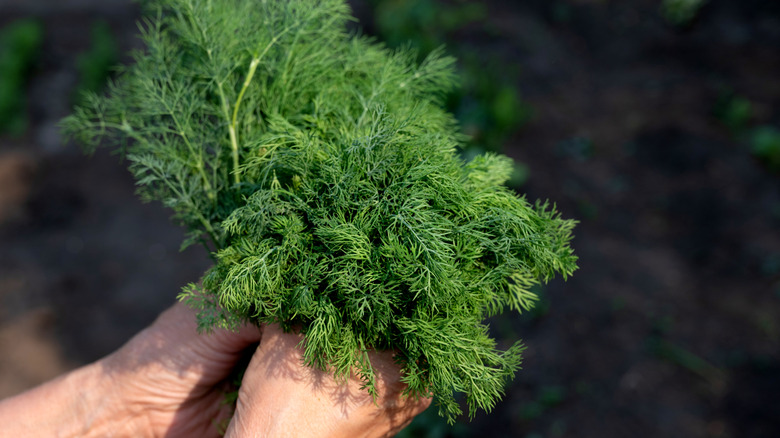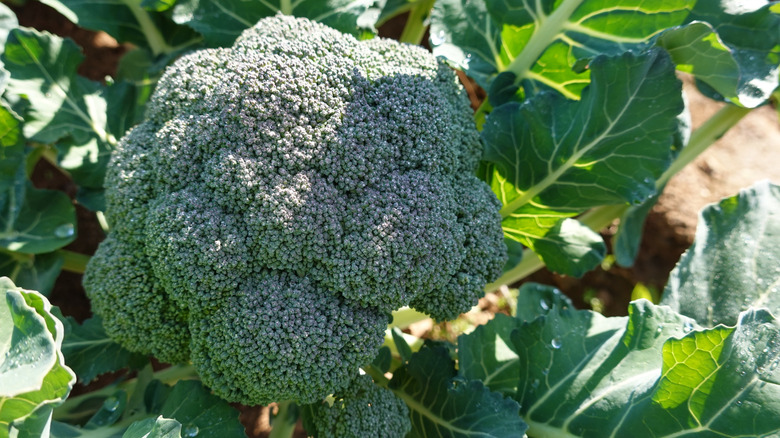22 Cucumber Companion Plants You Can Rely On For Healthier Crops
There are many benefits to growing vegetation alongside companions instead of by themselves. Not only does it save space, but if done right, it can make both plants thrive. Unfortunately, you can't just throw any random choices in the same bed and hope for the best — certain plants don't work together well. Having to learn which are good companions and which are not can be intimidating and might prevent you from trying out this method. Thankfully, though, looking around online, you can find plenty of guides to get you started.
One of the easy tricks people suggest to decide if plants should grow together or not is if you would combine them in a culinary dish. For example, cucumbers (Cucumis sativus), which grow in USDA Zones 4 through 12, work well alongside tomatoes, onions, dill, radishes, peppers, and beans. While this is a great place to get started on trying to figure out what grows well in the same bed, it's not a perfect method. Sometimes, other factors make two plants not as ideal together as you'd expect. For example, cucumbers and mint are a common mix in drinks and some dishes, but this herb tends to take all the nutrients that your cucumbers need, making them more like competitors than companions. Fennel is another example, as it releases a chemical that slows down the growth of other plants. Additionally, this trick only accounts for commonly edible foods, which means you might not think about certain flowers that grow well alongside your cucumbers, such as marigolds and zinnias. This list, however, will help you understand the best plants to grow with your cucumbers.
Corn
Corn (Zea mays) does especially well as a companion in limited spaces and grows in Zones 2 to 9. Its stalks are sturdy as well, giving smaller species of cucumbers a natural trellis without harming either plant. It's a beneficial situation for both corn and cucumbers, which is why you'll also find this vining fruit on the list of companion plants to grow with corn for a more abundant harvest. However, if you want the best benefits, you need to get your timing right. Generally, you should plant corn about two weeks before your cucumbers.
Beets
Not only do beets (beta vulgaris) and cucumbers do a fantastic job growing together, but it's similar to corn in the fact that it allows you to maximize the number of plants you can have in a small garden. Beets are also the best vegetable to grow if you're a lazy gardener because they're just so easy to maintain in Zones 2 through 10. A 2020 study published in Current Biology also revealed that a substance in beetroot peel can attract mosquitos, so you may enjoy harvesting beets and using the leftover peels as a trap.
Marigolds
Marigolds and cucumbers are the perfect companions in the garden. Marigolds (Tagetes spp.) are an amazing option for your beds anywhere in Zones 2 to 11, regardless of what else you are growing. They produce a few natural chemicals that work to keep insects and nematodes away. In fact, the roots of marigolds are said to be insecticidal, fungicidal, antiviral, and cytotoxic, which is great for plants like cucumbers and tomatoes, among others. However, they don't just keep away every bug — they can also attract beneficial insects like pollinators and ladybugs, which eat other pests.
Beans
Cucumbers enjoy having a lot of nutrients in their soil. Sometimes, it's hard to give them everything they need to thrive, especially nitrogen. If you're worried there's not enough nutrition in your soil, beans from the families Fabaceae or Leguminosae are a great solution in USDA Zones 3 to 11 . They pull nitrogen from the ground and turn it into beneficial fertilizer close to the surface, perfect for your produce. However, cucumbers tend to like a little more moisture than beans, so it's important to take this difference into account when watering.
Lentils
Like beans, lentils (Lens culinaris) are nitrogen-fixing and can help to amend poor soil. While these are generally great companion plants to grow with cucumbers, you need to make sure that your cucumbers aren't already getting too many nutrients, or else they could be more detrimental than helpful. Thankfully, there are a few easy ways to tell if your garden soil is lacking in nitrogen or if you have too much. Lentils have many other benefits in garden in Zones 4 to 11 as well, which is why they're an ideal plant to grow, especially in semi-arid areas.
Zinnias
There are many benefits to growing these plants together, which is why if you're not planting zinnias alongside cucumbers, you may want to think again. Zinnias (Zinnia elegans) work as insect bait, catching the attention of some harmful insects . While this does, unfortunately, mean that your flowers will probably end up a little sickly or die off faster, it saves your cucumbers so they can thrive and produce fruit. Zinnias also attract beneficial insects, ones that will pollinate your cucumbers and eat harmful pests when planted in Zones 2 to 11.
Radishes
Radishes (Raphanus sativus) thrive in in Zones 2 to 11 and do a fantastic job of keeping some of the more pesky insects away from your cucumbers, especially cucumber and flea beetles. Radishes also break up the earth as they grow, which makes for better aeration and well-drained soil. There isn't much competition for space, either, as radishes primarily grow underground and cucumbers mainly stay above. If you want even more benefits, you can plant these two alongside corn, as each of these plants can provide unique benefits for the others.
Oregano
Oregano (Origanum vulgare) isn't only a delicious herb to keep around in your garden for the occasional meal. It's also a great plant to get rid of pests, and will do fantastic in your garden alongside cucumbers in Zones 4 to 11. Oregano also doesn't need a lot of space — you only have to plant it around 18 inches away from your cucumbers so it can grow without vines taking over. However, oregano doesn't enjoy staying too hydrated, so you have to be careful with the soil moisture when planting it next to water-hungry cucumbers.
Carrots
Despite how big they can grow, cucumbers have rather narrow roots. This makes them an excellent companion to many root vegetables, including carrots (Daucus carota). When you plant cucumbers with these orange root vegetables, which also tend to grow roots more down than across, you can plant quite a bit of produce in the same space. Carrots tend to stay mostly underground as well, which means cucumbers can grow as big as they want above ground and not compete much, if at all. Carrots are quite versatile as well, and grow in any USDA zone with the right care.
Nasturtium
Cucumbers are highly susceptible to pests. Unfortunately, there are a lot of animals and insects that wouldn't mind devouring all of your fruit and even the plant itself. Nasturtium (Tropaeolum majus), when grown alongside cucumbers, helps to keep away some of the most problematic pests, including aphids and beetles. Interestingly, nasturtiums don't necessarily repel bugs, but they instead love the bright flora so much, the insects will ignore other plants. Once the flowers are fully covered in the pests, all you have to do is remove them. They are perennials in Zones 9 through 11, but can grow anywhere.
Celery
Cucumbers and celery (Apium graveolens) do well together in Zones 2 through 10 because their growing habits complement one another. Cucumbers can help shade celery, while celery helps to keep away some of the fruit's pests, including fungi. Additionally, these two plants have similar requirements for care. It can be problematic to grow two plants together that require very different levels of watering, for example, as you have to find the balance between too wet and too dry. With celery and cucumbers, both want a lot of water, so you can streamline your routine.
Peas
Peas (Pisum sativum) work a lot like beans — they add nitrogen to the soil to help improve the growth of cucumbers grown in Zones 3 and 11. Another benefit when you grow peas and cucumbers together is that you can reduce the amount of required gardening space, as they can both share a trellis. Peas don't mind cold weather, and can be planted up to six weeks before the first frost in some zones. Cucumbers do better after the threat of cold weather has faded, so you can plant them once the peas are established.
Peppers
Growing any kind of peppers (Capsicum spp.) and cucumbers together is another great idea, as both enjoy a lot of sun. However, peppers will sometimes start to rot or burn if they get too much sun at the hottest part of the day. By planting them next to climbing cucumbers, you can be sure the leaves of the cucumber slightly shade the other plant. While there appears to be no direct benefit to cucumbers, peppers are a plant you can grow alongside them for maximum garden use. Most peppers thrive in Zones 9 through 11.
Lettuce
Lettuce (Lactuca sativa) does incredibly well as a companion plant. Like most other plants on this list, the lettuce gets shade from its climbing companion. It also doesn't require much nitrogen until it starts its head development, so it won't continually leech this resource from your soil. Planting these two together is also a way to make the most out of your space, as lettuce can easily fit in spaces between the climbing cucumbers in Zones 4 through 9. If you're not sure what species to grow, check out these heirloom lettuce varieties recommended by an expert gardener.
Garlic
Garlic (Allium sativum) works well at warding off pests thanks to its pungent odor, but that's not all it can do. Garlic also has the ability to increase nutrients in the soil, including ones like calcium, nitrogen, and manganese, all of which help cucumbers to grow happier and healthier. Additionally, garlic is said to have antibacterial and antifungal properties, which is especially helpful around cucumbers given their tendency to catch disease. The vining plant also benefits the garlic by keeping the ground wet longer and will thrive in just about any Hardiness Zone depending on the variety you choose.
Arugula
Arugula (Eruca sativa) and cucumbers have a mutually beneficial relationship in Zones 2 through 11. Like so many other plants on the list, this leafy green gets shade and soil that stays damp longer thanks to the large and looming cucumber plant. This not only keeps arugula from burning, but it stops bolting, too, which is a process that makes leafy greens inedible. On the other hand, cucumbers won't have to fight against as many pests, as arugula attracts beneficial insects to eat the damaging ones. It also repels other pests that might eat up your produce.
Sunflowers
This sunny flower is a great companion plant for cucumbers, especially when it comes to attracting potential pollinators. They grow in Zones 4 to 9 easily. Despite their size, sunflowers (Helianthus annuus) don't need a lot of room for their roots in the soil, so they won't compete with your cucumbers for space. A sunflower's large size and sturdy stems make for a natural trellis. Because sunflowers don't take up much space and cucumbers can grow upwards with the help of these sunny plants, they also make excellent companions when it comes to the square-foot gardening method.
Tomatoes
Since tomatoes (Solanum spp.) and cucumbers are so similar, they can be fairly easy to grow together. They are both vining plants, have similar soil requirements, and attract the same pollinators. Tomatoes, depending on the species you choose, also grow in almost any zone. While they do work well growing alongside cucumbers, they also pose a small risk. They are plants with similar pests and problems, so if one plant develops an issue, it's likely the other will, too. You'll also want to make sure you give both space, as they enjoy having room to grow.
Chives
Chives (Allium spp.) are an easy-to-grow herb that will help your cucumber plants thrive in the garden, especially in Zones 3 to 9. They have a pungent odor, similar to garlic, that will keep pests away, especially Japanese beetles and aphids. However, you may only want to do this if you enjoy the taste of chives. It is thought that cucumbers are quick to pick up flavors of plants, especially herbs, that are grown next to them. This is why it's recommended to avoid growing plants like sage near cucumbers, as it can make the fruit taste unusual.
Onions
As you might imagine, onions (Allium spp.) have very similar benefits to garlic and chives when it comes to growing them with cucumbers in Zones 3 to 11. The strong odor keeps away insects and other pests, giving your fruits a chance to grow and ripen before they are snatched away. The large bulbs also break up the soil, preventing it from getting too compacted and allowing water to flow through instead of sitting on the surface and keeping the earth too moist. Similar to chives, it's thought that onions can alter the taste of cucumbers.
Dill
While not fully verified, it's thought that dill (Anethum graveolens) helps to keep away some common pests of cucumbers, including mites and aphids. It also attracts beneficial insects that will further eat those annoying bugs found in Zones 2 through 11. Dill is an aromatic herb, which can potentially enhance the flavor of your cucumbers (the two together create delicious pickles, after all). Just make sure you have a trellis to give these big plants a place to grow, otherwise they can potentially take over and not provide dill with any space to breathe.
Broccoli
Cucumbers and broccoli (Brassica oleracea) are the final great companions on this list. However, there are some considerations you need to take with these plants. Both require a high level of nutrients, which means that regular feedings are definitely in your future. You also need to give both plants enough space to grow. With these considerations in mind, you can plant cucumbers and broccoli in the same bed. While they may not benefit one another greatly like some of the other companions on this list, broccoli enjoys the shade cucumbers provide and also grows in Zones 3 to 10.
